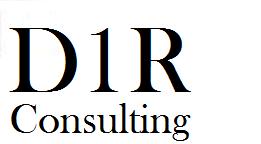Balanced Scorecard
- Details
- Created: Sunday, 01 April 2012 17:04
- Published: Wednesday, 04 April 2012 17:05
- Written by David DeCiero
The Balanced scorecard is a diversified way to measure the success of your business. The original one dimensional view of the financial performance of your company was too narrow to determine the state of your business. The Balanced Scorecard broadens it to four different views, each providing a different perspective of your business. The four defined perspectives are Financial, Customer, Learning and Growth, and Business Process.
The four views of the Balanced Scorecard all display a different perspective in which to view your business. The first is the Financial view. This is fairly straightforward, it provides the money view of the company. The second is the Customer. This perspective allows you to see your company in terms of its relationship to the customer. Since these are the lifeblood of our business, we want to pay particular attention to them. The third is Learning and Growth. This one focuses mainly on your employees, or you, and how they are becoming better in terms of their skills and knowledge. Since a static company is a dying company, the focus on measuring how it is changing and adapting as the world evolves is important. The final one is Business Process. This zeros in on effectiveness and efficiency in the processes that you perform as a business. All of these views are customizable, these are simply the original set of views described. I personally like to change “Learning and Growth” to Employees. I believe that this creates focus on the people who execute your business.
For each perspective, you will create goals for your organization. For example, the Customer view may have a goal of “Become #1 in market in repeat customer sales.” This corresponds to a strategic goal of the company. For each goal, there will be a metric. The metric is a quantifiable item. The selection of the metric is important, because it should be clear, relevant to the goal, and economical to gather. There can be multiple metrics per goal. Then, each goal should be assigned a target. This target represents the value that you would like the metric to achieve. The target should be numeric and be time bounded. That is, what the value you want to achieve and by when. With these items defined, and the information gathered, you can start to see the progress you are making towards your strategic goal.
The whole point behind the Balanced Scorecard is not to make a pretty one page picture. It is really to constantly align you and your employees with the strategic goals. The goals will always be right there, and your constant tracking of those goals (from multiple perspectives) will allow you to see where problems are arising or your strategy is not being executed. This way, you can start to take action if you see a problem, before it becomes a major problem. By also using the different perspectives, you don’t wait until something hits the finances to make changes. The fact is, it may end up on the bottom line after 6 months, but by that time the issue has already negatively impacted your company. It’s too late. Better to monitor it continuously to see and head off any signs of trouble early.

